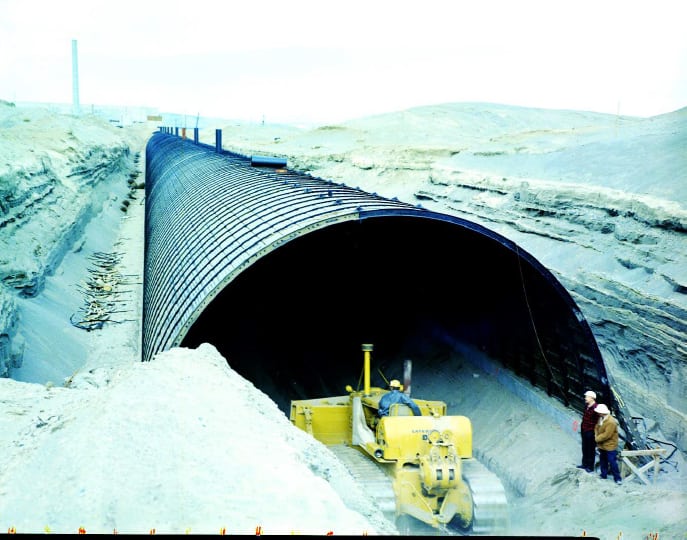
Nearly two months after a decades-old tunnel containing irradiated equipment was found to have partially collapsed at the Energy Department’s Hanford Site in Washington state, the Energy Department said Friday a similar tunnel is also at risk of collapse.
Hanford was rocked May 9 when personnel discovered a 20-foot by 20-foot section of Tunnel 1 near the site’s PUREX facility had caved in. An emergency was declared, and thousands of workers were ordered to shelter in place.
Now, a senior DOE official at Hanford told reporters, the nearby Tunnel 2 is also at risk.
“Tunnel 2 has been in service over 50 years, which exceeds its design life,” Douglas Shoop, manager of DOE’s Richland Operations Office, said in a webcast press conference from Hanford. “The risk of a future collapse of Tunnel 2 is considered high, based on the stresses on some of the structural components of the facility.”
The finding was part of an engineering evaluation of both tunnels DOE was obliged to perform for the Washington Department of Ecology, Hanford’s primary state regulator.
Tunnel 2, like Tunnel 1, contains railcars full of irradiated equipment from Hanford’s plutonium production days during the Cold War. Most of this equipment came from the PUREX — Plutonium Uranium Extraction — facility, and most of it probably still contains radioactive debris, Shoop said.
The metal and concrete tunnel, which holds 28 railcars, is not up to existing codes regarding structural integrity, and could buckle under the weight of the soil it is buried under, DOE said in a press statement Friday.
The Ecology Department has ordered DOE to provide a list of possible remedies to shore up Tunnel 2 by Aug. 1. The agency and one of its Hanford cleanup primes, CH2M Plateau Remediation Co., plan to meet with the public in July to gather input on the potential fixes. Shoop said that, hopefully, some former Hanford workers with knowledge of the PUREX tunnels will come forward to help.
More urgently, DOE plans to seal up Tunnel 1 with cement-like grout, Shoop said. The work will be performed by a subcontractor to CH2M, the company has said. The money for the fix will come out of Hanford’s fiscal 2017 and 2018 budgets. The Tunnel 1 work should be complete by the end of the calendar year, Shoop said. There are eight railcars full of waste in Tunnel 1.
Shoop said he could not be sure about the potential effect on other central plateau cleanup projects until the details of the grouting plan are worked out later this year.
One U.S. senator sounded an immediate call to action before DOE’s press event even wrapped up.
“The reports made public today indicate that another tunnel collapse is just waiting to happen,” Sen. Ron Wyden (D-Ore.) wrote in an emailed statement Friday. “These tunnels are not safe and have literally been out of sight and out of mind. My colleagues and I have asked the Government Accountability Office to take a closer look at the Department of Energy’s failure to clean up these tunnels and other radioactive waste sites at Hanford. I’m calling for action now in order to protect Hanford workers, the public and the environment from this ongoing threat.”
Wyden is a constant advocate for worker safety at Hanford. The site sits on the Columbia River, which is the border between Washington state and Oregon.
The Department of Energy has been monitoring Tunnel 1 and Tunnel 2 since the accident, Shoop said, and has found no sign of airborne radiological contamination since the partial collapse was discovered.